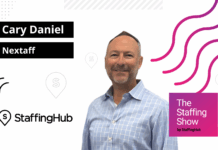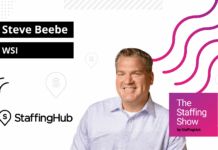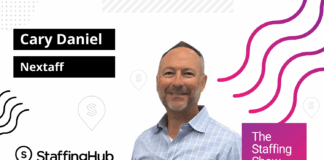
By Andy Wigderson, President of TargetRecruit
It wasn’t long ago that an ATS was revolutionary technology in the staffing industry. Now there are thousands of different applications designed to source more effectively, deliver a better candidate experience, make the right hire, and more. In fact, there are now entire events dedicated to HR technology.
A visit (even a virtual one) to any conference exhibit hall would be accompanied by lots of loud bells and piercing whistles to grab a CIO’s attention. When it’s your job to ensure your staffing firm has the right technology for optimal functioning and market dominance, you don’t need more bells and whistles. You need power and flexibility. You can get that through a single-source enterprise solution that allows you to fully integrate your front office with your back. Is that enough?
When you are assaulted with competing voices, calling for this critical app or that one, a cone of silence might be a more helpful tool, because it would allow you to take a quiet step back for a broader, longer-term view of enterprise requirements. It would give you the opportunity to tune out the noise in order to define how you can most effectively use technology to help you manage and accelerate the customer and candidate lifecycle.
What do you really need?
When the staffing industry was founded 75 years ago, its mission was to match temporary worker to temporary work. That is still the basic mission of the industry, although the matching process is far more sophisticated and facilitated by technology today. Like the 12 secret herbs and spices in the world’s most famous fried chicken, the staffing industry has a secret recipe guiding the success of individual firms as well. It is the relationships recruiters and account managers forge with job candidates and hiring managers. Given the importance of these relationships, any technology you consider should address three things:
- Remove friction from the recruiting and staffing process (e.g., sourcing and matching algorithms, communications, automated interview scheduling) to free up staff to focus on relationships.
- Be relatively intuitive and require minimal training or the solution will be a distraction and a contributor to staff turnover.
- Allow for implementation without significant customization or heavy ongoing maintenance, which ties up IT resources and makes it extremely difficult to focus on the future.
Experts in the predicting-the-future business tell us that over the next several years, the staffing industry will focus on technologies that improve efficiency and effectiveness. Make sure whatever you choose does not create more work than it is designed to improve. Look for a solution that offers options.
Where to start
In some staffing firms, the starting point for any exploration of technology needs is often a question of who owns or controls the technology conversation in your staffing firm. In many firms, the technology agenda is often heavily influenced by the business leader with the highest revenues or the loudest voice or the one who has the CEO’s ear. Hence the appeal of multiple point solutions with lots of exciting bells and whistles. What most non-technical leaders don’t get is that no matter how powerful or transformative the latest technology solution may be, expecting lots of disparate applications to work well together is no easy feat. It can require all manner of workarounds and retrofits and customization. Every time you stray from the original intent of a product, you add complications and set yourself up for downstream impacts that are difficult to predict. Staffing firms that are focused on growth should move beyond business strategies based on personalities and intuition. Serious businesses take technology seriously. They view their CIO as a strategic business leader who has a clear understanding of what technology the business needs to function optimally, stand out from competitors, adapt quickly to changing market conditions and grow.
Identify what’s due for an upgrade vs. what will move the business forward
Ideally, your technology investments will primarily focus on ways to advance your business by improving the candidate and client experience. Reality often intrudes on that ideal, however.
Technology can be likened to the never-ending job of painting the Golden Gate Bridge. The final brush stroke is not a conclusion but a signal to start all over again at the beginning. Every technology investment should be evaluated in terms of the time and expense involved not only in initial implementation but ongoing maintenance as well as unplanned obsolescence. This is especially meaningful to any CIO facing yet another budget overrun due to broken apps and tired technology.
The further away you get from initial implementation, the more likely you are to discover that maintenance requirements can expand in unexpected ways. These hidden costs of ownership represent significant future risk for the organization. What might have once been considered resilient gets fragile with age. Take, for example, cybersecurity. As browsers keep rolling out upgrades to protect data, long-established apps you depend on could suddenly stop working. When that happens, any discussion of where to put technology dollars comes to an abrupt halt. Don’t wait for technology decisions to be taken out of your hands. Instead, consider how a fully integrated, single-source enterprise solution can help you better manage future maintenance issues by offering out-of-the-box security, performance, reliability and scalability.
Look beyond features & functionality
The best evaluation of alternative solutions may seem somewhat sterile and unemotional, but that’s as it should be. Look beyond fancy features and powerful functionality to the total cost of ownership from birth to earth. Ask questions that look beyond what the solution can do today to how it will function in the future. For instance:
- If your business fundamentally changed at an unexpected pace, will the solution allow the flexibility to pivot or will it leave you vulnerable to someone else’s resources?
- Are there adequate resources available to help you maintain the solution in the future or will the knowledge and skills to do so be resident in an employee or consultant whose expertise may be lost due to unexpected job change at any point?
- How easy will it be to make changes? For instance, If you added an extra field or data point to an interface (e.g., 2020 to 2021), would every connected program require updating?
Ensure the success of an integration
Follow a few straightforward guidelines to increase your chances of a successful technology integration:
- Prioritize requirements. Consider a minimum viable product that satisfies your most pressing needs. It’s less risky. Plus, you often find a lot of requirements disappear with a little distance from the before to the after.
- Keep it simple. Avoid the tendency to try to capture every requirement across your business from day one and build something that is perfect. It’s entirely achievable, but it is expensive in terms of both dollars and days.
- Configure rather than customize. You will be better off getting up and running as soon as possible rather than trying to reimagine standard features and functionality. At the end of six months, you may discover you don’t really need those things that seemed so critically important at the start of the process.
- Work with the right partner. Look for a technology partner that understands the staffing business and what it takes to succeed in this industry.
Technology is an enabler, not a destination. Leverage it to help you better serve candidates and clients, without getting distracted by all those bells and whistles, no matter how loud or insistent.
 Andy is the President of TargetRecruit and joined the company in 2018. He is a B2B marketing, sales and product management executive with over 20 years of enterprise SaaS experience. His primary focus is in product strategy, marketing and sales with extensive experience in services including customer success, education and implementation.
Andy is the President of TargetRecruit and joined the company in 2018. He is a B2B marketing, sales and product management executive with over 20 years of enterprise SaaS experience. His primary focus is in product strategy, marketing and sales with extensive experience in services including customer success, education and implementation.





